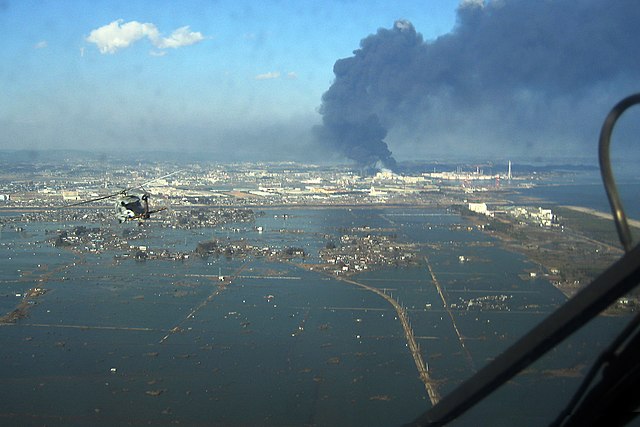The Tōhoku earthquake and tsunami occurred on March 11, 2011, and had significant and far-reaching consequences. Here are key facts about the event:
-
Magnitude and Epicenter:
- The earthquake had a magnitude of 9.0–9.1, making it one of the most powerful earthquakes ever recorded. The epicenter was off the northeastern coast of Japan’s Tōhoku region.

- The earthquake had a magnitude of 9.0–9.1, making it one of the most powerful earthquakes ever recorded. The epicenter was off the northeastern coast of Japan’s Tōhoku region.
-
Tsunami Formation:
- The earthquake triggered a massive tsunami with waves reaching heights of up to 40 meters (131 feet). The tsunami was responsible for the majority of the devastation and loss of life.
-
Devastation and Casualties:
- The Tōhoku earthquake and tsunami caused widespread destruction along the northeastern coast of Japan. Entire communities were swept away, and the impact was felt across multiple prefectures. The combined earthquake and tsunami resulted in the deaths of over 15,000 people, with thousands more missing.
-
Nuclear Disaster at Fukushima:
- The earthquake and tsunami led to a nuclear disaster at the Fukushima Daiichi Nuclear Power Plant. The facility lost power, and multiple reactors experienced meltdowns. It was the most severe nuclear disaster since the Chernobyl accident in 1986.
-
Evacuations and Radiation Exposure:
- A significant number of residents were evacuated from the area surrounding the Fukushima Daiichi plant due to the risk of radiation exposure. The incident raised concerns about the safety of nuclear power and led to changes in nuclear policies in various countries.
-
Global Impact:
- The Tōhoku earthquake and tsunami had global implications. It disrupted global supply chains, particularly in the automotive and electronics industries. The event also prompted a reassessment of earthquake and tsunami preparedness in other coastal regions worldwide.
-
Response and Recovery:
- The Japanese government, along with international aid organizations, launched a massive response and recovery effort. Reconstruction efforts included rebuilding infrastructure, homes, and communities. However, the recovery process has been lengthy, and some areas are still dealing with the long-term impacts.
-
Earthquake and Tsunami Warning Systems:
- The Tōhoku earthquake underscored the importance of effective earthquake and tsunami warning systems. Japan’s advanced early warning system provided crucial seconds to minutes of alert before the shaking began, allowing some people to seek shelter. This event also prompted improvements in global tsunami warning systems.
-
Lessons Learned:
- The Tōhoku earthquake and its aftermath prompted a reevaluation of disaster preparedness and response strategies. Lessons learned include the need for resilient infrastructure, effective evacuation plans, and better coordination between local, national, and international agencies during large-scale disasters.
-
Ongoing Impact on Mental Health:
- The trauma and loss experienced by survivors of the Tōhoku earthquake and tsunami had lasting effects on mental health. Post-traumatic stress disorder (PTSD) and other mental health issues continue to be a significant concern for many individuals affected by the disaster.
The Tōhoku earthquake and tsunami of 2011 had a profound impact on Japan and the world, leading to changes in disaster preparedness, nuclear safety policies, and global awareness of the interconnectedness of modern societies in the face of natural disasters.









